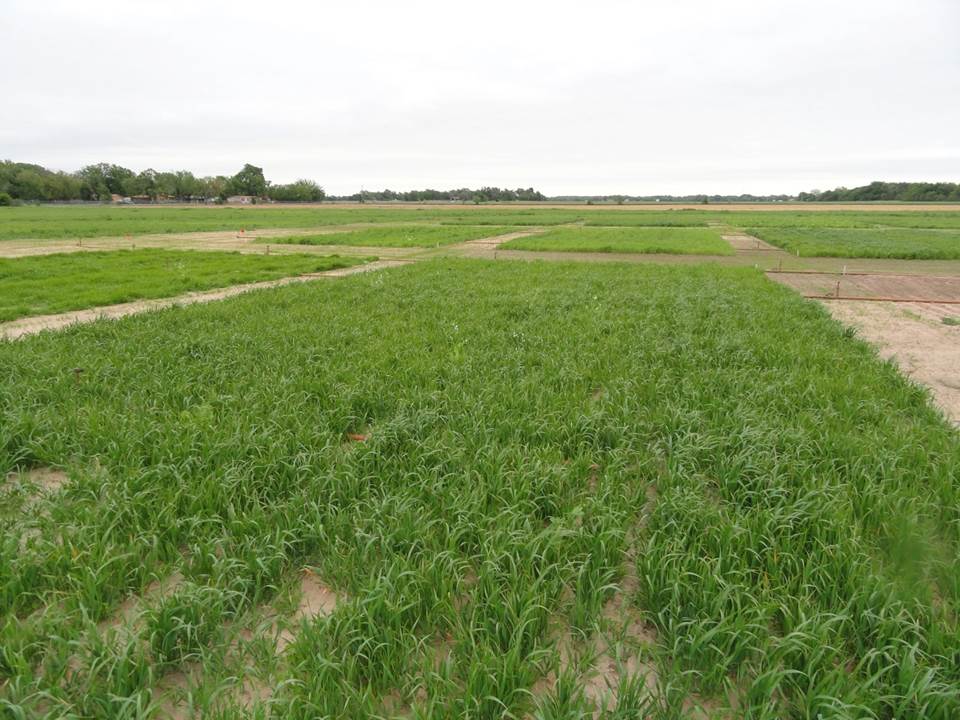
Kansas State University is part of a coalition of universities and other agencies that received funding to study cover crops in sustainable agriculture systems. | Download this photo.
Ground-breaking research aims to enhance cover crop-based conservation tillage systems
MANHATTAN, Kan. — Agriculture’s grand challenge of feeding the world’s growing population while protecting the environment just got a big boost. The U.S. Department of Agriculture’s Agriculture and Food Research Initiative (AFRI) awarded eight institutions nearly $80 million to fund ground-breaking research aimed at transitioning today’s agriculture into more sustainable and resilient systems.
As part of that effort, the AFRI-Sustainable Agriculture Systems program awarded $10 million to the project “Enhancing the Sustainability of U.S. Cropping Systems through Cover Crops and an Innovative Information and Technology Network”, led by Chris Reberg-Horton with North Carolina State University and Steven Mirsky with the USDA-Agricultural Research Service. The funding will support a coalition of about 100 university, non-profit, and government scientists at 35 institutions with expertise in crop management, systems modeling, social science, technology, including sensing technology, computer science, and artificial intelligence/machine learning, plus human-centered design (farmer-driven research, technology, and outreach).
Kansas State University researchers on the coalition include agronomy professor DeAnn Presley, an environmental soil science and management extension specialist and associate agronomy professor Peter Tomlinson, an extension specialist in environmental quality.
The five-year project aims to increase crop profitability, resilience, and sustainability (regenerative agriculture) by enhancing the effectiveness of cover crop-based conservation tillage systems for commodity crops such as corn, soybeans, and cotton.
“This project will provide critical answers to questions producers ask about how to adjust their management systems (soil fertility, pest, and disease) as they integrate cover crops into their crop rotation,” Tomlinson said.
The researchers are part of a group that makes up a precision sustainable agriculture team (http://precisionsustainableag.org/) designed to enhance research, education, and extension through real-time data flow, edge and cloud-based platforms, decision support tools, and on-farm monitoring systems. By focusing on cover crops and conservation tillage, the project will contribute to both improved profit for farmers and reduced environmental impacts of agriculture. Cover crops are plants, such as legumes, grasses, and brassicas, that are grown to protect and regenerate soil and improve water, nutrient, and pest management; they are not typically harvested for cash income. When cover crops and reduced tillage are used together, farmers can also accelerate carbon sequestration in the soil. These farming practices increase soil health, allowing for more climate-resilient production of food and fiber.
The research focus for Tomlinson and Presley includes:
- Defining how the environment and cover crops interact to influence nitrogen and water use efficiency and availability, including subsequent crop productivity and resilience.
- Quantify the optimal strategy for planting into cover crops to help define the best disease, pest, and weed management strategies.
- Identify on-farm implications of cover crops on abiotic (water and nitrogen) and biotic stresses (disease, pests, and weeds) influencing crop performance.
“I’m excited to be a part of this large project that touches so many states,” Presley said. “It has the potential to generate an extensive amount of useful, practical information that Kansas farmers have been asking for, particularly about how cover crops can be part of an integrated pest management system for sustainable crop production.”
